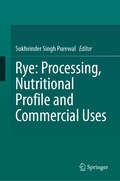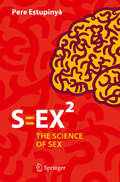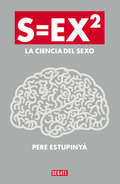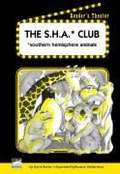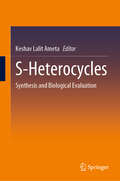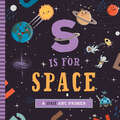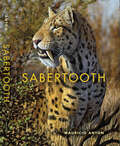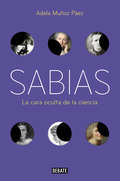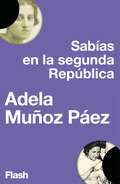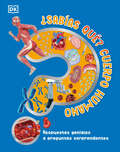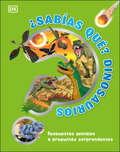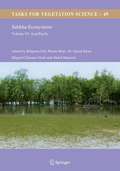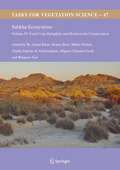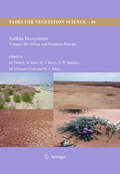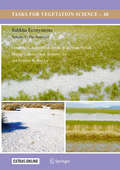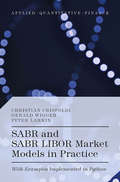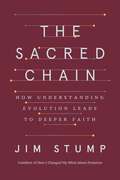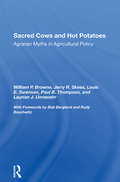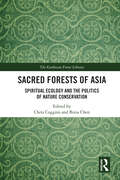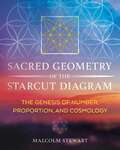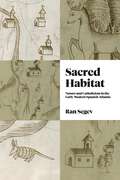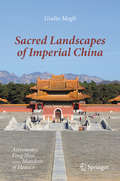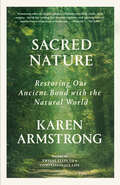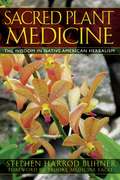- Table View
- List View
Rye: Processing, Nutritional Profile and Commercial Uses
by Sukhvinder Singh PurewalCereal grains are gaining interest from food manufacturers and pharmaceutical industries because of their health benefits. In the current day consumers are focusing on diets rich in nutrients and bioactive compounds and researchers are exploring the potential of different cereal grains. Cereal grain possesses a unique blend of macronutrients and micronutrients. Among different cereal grains (wheat, rye, oats, rice, barley and sorghum) rye possess higher amount of arabinoxylan. Rye is the only crop after wheat which possess a significant amount of gluten proteins, and is widely used in food industries throughout the world for the preparation of products such as bread, biscuits, rusk, flakes and beer. Scientific reports on rye considered it an important dietary source as it has well balanced amino acid profile as compared to wheat. Rye grains possess an array of bioactive compounds with antioxidant potential that may help in immunity boosting and countering age-related issues. Rye istraditionally used for the preparation of bread in Northern and Eastern Europe. As a staple food, bread is enjoyed by major part of population, making its quality is of utmost importance. Being an important part of dietary menu, bread should have high nutritional quality. Nutritional profile indicates that bread is a rich source of fibers, proteins along with macro and micronutrients. Rye is a dual-purpose crop used as food and feed and has the potential to be used for medicinal purpose as it is a good source of fibers and antioxidants. Further, starch isolated from rye grains can be utilized as excipient during tablet preparation. Rye starch-based coatings are useful in enhancing the shelf life of fresh cut fruits and whole fruits. After wheat, rye is the only cereal grain which possess gluten, meaning its flour can be used in the preparation of protein and fiber rich bakery products. Rye: Processing, Nutritional Profile and Commercial Uses discusses the physical parameters and health benefiting features of rye, exploring the chemistry of rye components, rye flour and starch properties and proteins and their extraction and industrial uses, antioxidant properties, fiber profile and health benefits, rye flour based important food products and effect of processing on nutritional profile. This is the first scientific text available specifically on rye grains and provides the latest information and updates. Rye's different components such as starch, protein, fiber, bioactive metabolites and their uses in food products are described in detail. Chapters focusing on the specific components of rye grains and their health benefits are included, making this the go-to source for researchers looking for a singular and comprehensive overview of this beneficial crop.
S=ex²
by Pere EstupinyàYou have in your hands the most rigorous, complete and readable book ever written about the fascinating science of human sexuality. This book goes beyond the well-wornsexual education advice and the usual evolutionist psychology. After The BrainSnatcher, Pere Estupinyà comes back with the first popular science book on sexaimed at a wide audience. While there are some tips for the more adventurous, thereis also a wealth of new information to be discovered. Distancing himself from the manybooks on advice or techniques, Estupinyà brings sex to another dimension bycombining popular beliefs and science. Do you want proof that ourdecision-making in the "heat of the moment" is less rational than we think? Didyou know that mind and vagina each go their own way? Are you interested inlearning about the effects of yoga on sexual pleasure? Did you know about theattempts in the 60s to "cure" homosexuals with electric shock therapy, thechemical analysis of female ejaculation, or the fundamental relationshipbetween the sympathetic and parasympathetic nervous system? The author hasspoken directly with asexual and intersexual individuals, fetishists,multi-orgasmic women, women who never have orgasms through penetration, and menwho have no refractory period. He has also participated in sadomasochisticevents; learned tantric techniques with a couple of coaches, spoken with pornperformers at Barcelona's Bagdad, and attended workshops in which a womanteaches how to have orgasms with your mind and breathing. The result is anincredible miscellany of information that appeals to both the scientificcommunity and the curious.
S=EX2: La ciencia del sexo
by Pere EstupinyàUna aproximación al sexo innovadora y original que revolucionará nuestra mente y quizá también nuestro comportamiento. Tienes en tus manos el libro más riguroso, ameno, y completo jamás escrito sobre el fascinante estudio científico de la sexualidad humana. Por amor a la ciencia, Pere Estupinyà, el ladrón de cerebros, se sumerge en una novedosa investigación: participa en un estudio sobre disfunción eréctil y el orgasmo masculino, visita centros de referencia como el prestigioso Instituto Kinsey, se infiltra en clínicas de medicina sexual, acude a congresos internacionales de sexología, y entrevista a científicos expertos en sexualidad. Pero también habla directamente con asexuales, fetichistas, mujeres multiorgásmicas, anorgásmicas, intersexuales, pasa una noche en un club de swingers de Nueva York, participa en eventos sadomasoquistas, habla con actores y actrices porno, y acude a talleres donde una mujer enseña a tener orgasmos con la respiración y la mente. Todo esto acompañado de una revisión exhaustiva de bibliografía científica donde encuentra valiosas publicaciones sobre los procesos inconscientes de la atracción, el sexo online, nuestra naturaleza polígama versus la monógama, la relación entre el placer y el dolor, las disfunciones sexuales más frecuentes, y mucho más. En La ciencia del sexo encontrarás infinidad de anécdotas históricas, consejos prácticos, reflexiones profundas, y respuestas a qué nos ocurre cuando estamos disfrutando de la actividad que más nos interesa, pero que paradójicamente la ciencia tiene más reparos en explorar.
The S.H.A.* Club *Southern Hemisphere Animals
by Dori Butler Jeffrey Fuerst Rosario ValderramaPerform this script about a group of animals who must choose a location for the Southern Hemisphere Animal Club's annual conference.
S-Heterocycles: Synthesis and Biological Evaluation
by Keshav Lalit AmetaThis book presents the recent research on sulfur-containing heterocyclic scaffolds that are crucial for biological processes. The numerous synthetic techniques utilized for the design and synthesis of different sized S-heterocycles, particularly biologically active frameworks with their pharmacological significance, are discussed in this book. This book is a useful reference for students, researchers and professionals working in the chemical and pharmaceutical industries.
S Is for Space: A Space ABC Primer
by Ashley Marie MirelesAn out-of-this-world ABC primer from astronaut to zenith and beyond!
Sabertooth (Life of the Past)
by Mauricio Antón“A unique review of the many unusual and nearly worldwide occurrences of sabertooths and their relatives over more than 50 million years.” —ChoiceWith their spectacularly enlarged canines, sabertooth cats are among the most popular of prehistoric animals, yet it is surprising how little information about them is available for the curious layperson. What’s more, there were other sabertooths that were not cats, animals with exotic names like nimravids, barbourofelids, and thylacosmilids. Some were no taller than a domestic cat, others were larger than a lion, and some were as weird as their names suggest. Sabertooths continue to pose questions even for specialists. What did they look like? How did they use their spectacular canine teeth? And why did they finally go extinct? In this visual and intellectual treat of a book, Mauricio Antón tells their story in words and pictures, all scrupulously based on the latest scientific research. The book is a glorious wedding of science and art that celebrates the remarkable diversity of the life of the not-so-distant past.“The best paleomammal artist working today [and] his knowledge of sabertooths and their evolution is second to none.” —Lars Werdelin, Swedish Museum of Natural History“Mauricio Antón is one of the best paleoartists. What sets him apart is the fact that he is a great paleontologist in his own right. Probably no one else has thought more about sabertooth than he has. As a result, his illustrations often demonstrate a particular behavior of the extinct mammal that he has personally researched or display a unique point of view.” —Xiaoming Wang, Natural History Museum of Los Angeles
Sabias: La otra cara de la ciencia
by Adela Muñoz PáezUn fascinante recorrido por la historia de las mujeres de la ciencia. ¿Quién fue Enheduanna? ¿Y Émilie de Châtelet? ¿Por qué los maestros cerveceros consideran su mentora a Hildegarda de Bingen, una monja del siglo XI? ¿Fue Marie Curie merecedora de los dos premios Nobel de ciencias que recibió? ¿Habría sido posible descifrar la estructura del ADN sin el trabajo de Rosalind Franklin? ¿Por qué es tan desconocida la mujer que desentrañó la estructura de la penicilina? ¿Qué papel tuvieron las mujeres durante la Edad de Plata que la ciencia vivió en la Segunda República española? En este libro rescatamos la historia de algunas de las mujeres que han hecho contribuciones relevantes en la ciencia y paralelamente, para entender porqué fueron tan escasas y hoy son tan desconocidas, realizamos un recorrido por la historia. En este paseo descubrimos que hasta bien entrado el siglo XX, las mujerestuvieron vetado el ingreso en las universidades y el ejercicio de muchas profesiones que requerían estudios, y que antes habían sido expulsadas de las bibliotecas de los monasterios, los centros donde se refugió el saber durante la Edad Media. También descubrimos que sus historias fueron borradas de los anales de la ciencia o sus contribuciones les fueron arrebatadas. Las mujeres científicas de la historia están siendo hoy redescubiertas para pasmo y solaz de propios y extraños, y brillan con todo su esplendor.
Sabias en la Segunda República (Flash Ensayo)
by Adela Muñoz PáezUn breve recorrido por la historia de la ciencia española y sus primeras grandes científicas. ¿Qué papel desempeñaron las mujeres durante la Edad de Plata que la ciencia vivió en la Segunda República española? Adela Muñoz Páez rescata la historia de algunas de las mujeres españolas que han hecho contribuciones relevantes a la ciencia y paralelamente, para entender por qué fueron tan escasas y hoy son tan desconocidas, realiza un paseo por la España de comienzos del siglo XX hasta nuestros días. Así, descubriremos que el movimiento feminista español gestado a finales del siglo XIX dio sus frutos más brillantes durante la Segunda República; que debido a la guerra una generación entera de científicas cayó en el olvido y que durante el franquismo no solo se anularon todos los logros conseguidos en cuestiones de igualdad, sino que se desprestigió a las mujeres y los hombres que los protagonizaron y se borraron sus huellas de los anales de la ciencia. Hoy su redescubrimiento es un ejercicio de justicia histórica para que por fin brillen con todo su esplendor.
¿Sabías qué? Cuerpo humano (Why? Series)
by DK¿Cómo respiramos? ¿Por qué el azúcar tiene un sabor dulce? ¿De qué están hechos los huesos? ¿Qué es el reloj biológico? ¿Por qué no es doloroso cortarse las uñas?¡Encuentra las respuestas más sorprendentes para todas las preguntas sobre el cuerpo humano! Adéntrate en las páginas de este libro sobre tu cuerpo y déjate sorprender con valiosos contenidos y cientos de curiosidades. Organizado en cinco capítulos sobre los aspectos básicos del cuerpo como las partes que lo forman, su funcionamiento, formas de tener un cuerpo saludable o maravillas de la medicina.Con formato interactivo para que los más pequeños mantengan el interés mientras aprenden y encuentran respuestas por sí mismos.Repleto de impactantes fotografías y datos divertidos sobre el funcionamiento y la anatomía de nuestro cuerpo.La curiosidad es imprescindible en todas las etapas de la infancia, por lo que es importante que los niños se mantengan motivados y con ganas de aprender. ¿Sabías qué? Cuerpo humano es un libro de biología que reúne cientos de datos curiosos para que las mentes más inquietas estén siempre activas. Es una útil herramienta para niños de 6 a 9 años que les ayudará a descubrir nuevos datos del mundo que les rodea, a desarrollar su capacidad de observación y a saciar su hambre de saber. Discover the answers to more than 200 of the most jaw-dropping questions about the human bodyEver wonder what’s happening inside your body right now? Young readers will love learning the answers to all their sensational and squeamish questions about what makes us human in this children’s biology book, perfect for kids aged 6-9.Inside the pages of this mind-boggling human body factbook, you’ll discover:Five chapters covering body basics, parts of the body, how the body works, being healthy, and medical marvelsQuestion and answer format that makes topics easily digestible and intriguing'Quick quiz' boxes that allow young readers to test their knowledge of the human body Fun facts and detailed illustrations covering a large range of both common and bizarre biology topicsThis human body encyclopedia for kids is packed with captivating facts for curious minds! What are bones made of? Why does sugar taste sweet? Why do our ears pop? Page after page, kids will uncover incredible answers to all the questions they’ve ever had about their body, and some they haven’t even thought of!
¿Sabías qué? Dinosaurios (Why? Series)
by DK¿Podría un dinosaurio tener mascotas? ¿Por qué T. Rex tenía los brazos tan cortos? ¿Qué podemos aprender de la caca de dinosaurio?Explora las respuestas intrigantes a más de 200 dudas en '¿Sabías qué? Dinosaurios'Este libro para niños ayudará a las mentes más curiosas a descubrir las respuestas a todas las preguntas de los dinosaurios que pueden tener los niños y niñas de 6 a 9 años , ¡y también las que no se les habían ni ocurrido! ¿Los dinosaurios dormían? ¿Tenían plumas? Este libro muestra increíbles criaturas, fósiles fantásticos y el mundo prehistórico y ayuda a los niños a adentrarse en el gigantesco mundo de los dinosaurios. Repleto de datos y al día de los últimos descubrimientos, es un libro visualmente impresionante que todos los jóvenes entusiastas de los dinosaurios y cazadores de fósiles querrán tener.Could I have a pet dinosaur? Why did T. rex have such short arms? What can we learn from dinosaur poo?Explore the intriguing answers to more than 200 questions about dinosaurs in DK's newest dinosaur encyclopedia for kids.This children's book, ideal for ages 6-9, will help inquisitive minds find out the answers to all the dinosaur questions they may have, and some they hadn't thought of! Did dinosaurs sleep? Did they have feathers? Covering amazing ancient creatures, fantastic fossils, and the positively perplexing prehistoric world, '¿Sabías qué? Dinosaurios' helps children get a handle with the gigantic topic that is dinosaurs. Bursting with up-to-date facts and discoveries, this visually stunning book is something that every young dinosaur enthusiast and fossil hunter will want to own.
Sabkha Ecosystems: Volume VI: Asia/Pacific (Tasks for Vegetation Science #49)
by Benno Böer M. Ajmal Khan Miguel Clüsener-Godt Bilquees Gul Abdul HameedThis book is the sixth and final volume in the Tasks for Vegetation Science book series, and it concludes the most comprehensive scientific documentation dealing with hypersaline ecosystems of the world.
Sabkha Ecosystems: Cash Crop Halophyte and Biodiversity Conservation
by Bilquees Gul Miguel Clüsener-Godt Thabit Zahran Abdessalaam Münir Öztürk Benno Böer M. Ajmal KhanSustainable development is the key for the survival in 21st century. The natural resources are finite and cannot be used with impunity because we are the custodian of these resources and have responsibility to pass these to the next generation. This monumental task requires several major commitments and most important of them is to arrest population explosion which has already reached seven billion. Natural resources like air to breath, food to eat, and water to drink, and fossil fuel to maintain this life style are being overexploited. Unrestrained consuming culture will accelerate undesired situation. This situation will have more dire consequences in resource limited ecosystems like dry lands. Given the severe scarcity of water, ever increasing population and soil salinization out of the box solutions for the provision of food and clean energy is required to spare meager fresh water resources for conventional agriculture. This volume contains a number of articles dealing with halophyte ecology, bio-geography, ecophysiology, hyper-saline soils, biofuels, biosaline agriculture, biosaline landscaping, climate change mitigation, and biodiversity. It also contains the communication of innovative ideas, such as the research into floating mangroves, seagrass terraces, as well as a World Halophyte Garden containing all known salt-tolerant plant species. It is hoped that the information provided will not only advance vegetation science, but that it will truly generate more interdisciplinarity, networking, awareness, and inspire farmers, and agricultural and landscaping stakeholders to seriously engage in halophyte cash crop production in coastal hyper-saline areas.
Sabkha Ecosystems
by Münir Öztürk Benno Böer Hans-Jörg Barth Siegmar-W. Breckle M. Ajmal Khan Miguel Clüsener-GodtThis book is part of the Sabkha Ecosystems series. The series is designed to provide information on sabkha ecosystems of different regions. It will add to the collective knowledge available about saline ecosystems and also focuses on the African region where only limited information is currently available on.
Sabkha Ecosystems Volume V: The Americas
by Siegmar-W. Breckle Bilquees Gul Miguel Clüsener-Godt Münir Ȫzturk Benno Boër M. Ajmal Ajmal KhanThis book is a part of the Sabkha Ecosystems series which was designed to provide information on sabkha ecosystems of different regions and to add to the collective knowledge available about saline ecosystems. The comprehensive coverage assists the reader gaining a thorough understanding of sabkha geology, hydrology, geomorphology, zoology, botany, ecology and ecosystem functioning, as well as sabkha conservation, utilization and development. Volume I focused on The Arabian Peninsula and Adjacent Countries, volume II was based on describing saline ecosystems of West and Central Asia , volume III referred to Africa and Southern Europe, while volume IV focused on Cash Crop Halophyte and Biodiversity Conservation. The present volume V focuses on Americans.
SABR and SABR LIBOR Market Models in Practice: With Examples Implemented in Python (Applied Quantitative Finance)
by Christian Crispoldi Gérald Wigger Peter LarkinInterest rate traders have been using the SABR model to price vanilla products for more than a decade. However this model suffers however from a severe limitation: its inability to value exotic products. A term structure model à la LIBOR Market Model (LMM) is often employed to value these more complex derivatives, however the LMM is unable to capture the volatility smile. A joint SABR LIBOR Market Model is the natural evolution towards a consistent pricing of vanilla and exotic products. Knowledge of these models is essential to all aspiring interest rate quants, traders and risk managers, as well an understanding of their failings and alternatives. SABR and SABR Libor Market Models in Practice is an accessible guide to modern interest rate modelling. Rather than covering an array of models which are seldom used in practice, it focuses on the SABR model, the market standard for vanilla products, the LIBOR Market Model, the most commonly used model for exotic products and the extended SABR LIBOR Market Model. The book takes a hands-on approach, demonstrating simply how to implement and work with these models in a market setting. It bridges the gap between the understanding of the models from a conceptual and mathematical perspective and the actual implementation by supplementing the interest rate theory with modelling specific, practical code examples written in Python.
The Sacred Chain: How Understanding Evolution Leads to Deeper Faith
by Jim StumpA thought-provoking and eye-opening work by Jim Stump, Vice President at BioLogos and host of the Language of God podcast, offering a compelling argument about how evolution does not have to be at odds with faith, but can actually enrich and deepen it.In this moving and deeply thoughtful book, Jim Stump takes readers with him on his journey to understanding evolution and reconciling it with his faith. The Sacred Chain draws on philosophy, theology, and the latest scientific research to tackle some of the biggest questions facing humanity and people of faith today, such as:How can we hold the Bible as a sacred text and yet reconcile modern science with it?By condensing noteworthy events in the history of our universe into one calendar week, what can we learn about God’s creative process and priorities, and where humans fit in?If humans are created in the image of God, what does evolution have to teach us about our species and our place in creation?What about the soul? How can we understand our transcendent qualities if the human body is the product of evolution?How does evolutionary science help us understand how God might use pain and suffering for important and good purposes?Does it have to be one or the other—science or religion—or is there a third way, one that not only preserves faith in the face of modern science, but leads to a stronger, more relevant, and more authentic faith?Deeply researched and a delight to read, The Sacred Chain provides clarity in our uncertain times, revealing a bigger picture of our world and our place within it. It is a panorama consistent with the scientific findings about who we are and where we come from that can actually bolster our faith as it engages our curiosity about ourselves, our universe, and the nature of existence itself.
Sacred Cows And Hot Potatoes: Agrarian Myths And Agricultural Policy
by Paul Thompson William P. Browne Jerry R Skees Louis E SwansonSacred Cows and Hot Potatoes challenges many of the assumptions of current agricultural policies—such as equating "farm" with "rural," high farm prices with high farm incomes, or farm programs with food programs—and examines the agrarian roots of these policies. From the origins of agrarian myths to the latest controversies over farming and the environment, this book provides an overview of the use and abuse of agrarian values in policymaking. Illustrated with pictures, cartoons, and graphs, the book will appeal to a broad audience, including policymakers, rural sociologists, agricultural economists, political scientists, ethicists, and the interested public.
Sacred Forests of Asia: Spiritual Ecology and the Politics of Nature Conservation (The Earthscan Forest Library)
by Chris Coggins Bixia ChenPresenting a thorough examination of the sacred forests of Asia, this volume engages with dynamic new scholarly dialogues on the nature of sacred space, place, landscape, and ecology in the context of the sharply contested ideas of the Anthropocene. Given the vast geographic range of sacred groves in Asia, this volume discusses the diversity of associated cosmologies, ecologies, traditional local resource management practices, and environmental governance systems developed during the pre-colonial, colonial, and post-colonial periods. Adopting theoretical perspectives from political ecology, the book views ecology and polity as constitutive elements interacting within local, regional, and global networks. Readers will find the very first systematic comparative analysis of sacred forests that include the karchall mabhuy of the Katu people of Central Vietnam, the leuweng kolot of the Baduy people of West Java, the fengshui forests of southern China, the groves to the goddess Sarna Mata worshiped by the Oraon people of Jharkhand India, the mauelsoop and bibosoop of Korea, and many more. Comprising in-depth, field-based case studies, each chapter shows how the forest’s sacrality must not be conceptually delinked from its roles in common property regimes, resource security, spiritual matters of ultimate concern, and cultural identity. This volume will be of great interest to students and scholars of indigenous studies, environmental anthropology, political ecology, geography, religion and heritage, nature conservation, environmental protection, and Asian studies.
Sacred Geometry of the Starcut Diagram: The Genesis of Number, Proportion, and Cosmology
by Malcolm Stewart• Lavishly illustrated with hundreds of detailed diagrams and technical illustrations exploring the evolution and importance of the starcut diagram • Shows how the starcut diagram underlies the shaman&’s dance in China, the Vedic Fire Altar in India, Raphael frescoes, labyrinth designs, the Great Pyramid in Egypt, and the building of ancient cities • Explains how the starcut diagram was used in building and design, how it relates to Pythagoras&’s Tetrakys, and how it contains knowledge of the Tree of Life As Malcolm Stewart reveals in this lavishly illustrated study, the simplesquare figure of the Starcut diagram, created only with circles, has extraordinary geometric properties. It allows you to make mathematically exact measurements and build perfectly true level structures without a computer, calculator, slide rule, plumb bob, or laser level. Sharing his extensive research, along with hundreds of detailed diagrams and technical illustrations, the author shows how the Starcut diagram was the key to the building of humanity&’s first cities and how it underlies many significant patterns and proportions around the world. Using circles drawn from the vesica piscis, Stewart explains how to create the Starcut diagram and shows how this shape was at the foundation of ancient building and design, illustrating the numerous connections between the diagram and the creation of mandalas and yantras, stained glass windows, architectural ground plans, temples and other sacred buildings, and surveying methods. He also shows how the Starcut diagram reveals ancient geometric knowledge of pi, the Fibonacci sequence, Pythagorean shapes and seals, the golden ratio, the power of 108 and other sacred numbers, and magic squares. Exploring the Starcut diagram&’s cosmological and theological implications, Stewart explains how it contains knowledge of the Tree of Life and the Kabbalah. He examines how it relates to the Tetraktys, the key teaching device of Pythagoras, and other cosmograms. Demonstrating the ancient relationships existing between number, geometry, cosmology, and musical harmony, the author shows how the simple shape of the Starcut diagram unifies the many threads of sacred geometry into one beautiful mathematical tapestry.
Sacred Habitat: Nature and Catholicism in the Early Modern Spanish Atlantic (Iberian Encounter and Exchange, 475–1755)
by Ran SegevKnown as a time of revolutions in science, the early modern era in Europe was characterized by the emergence of new disciplines and ways of thinking. Taking this conceit a step further, Sacred Habitat shows how Spanish friars and missionaries used new scholarly approaches, methods, and empirical data from their studies of ecology to promote Catholic goals and incorporate American nature into centuries-old church traditions.Ran Segev examines the interrelated connections between Catholicism and geography, cosmography, and natural history—fields of study that gained particular prominence during the sixteenth and seventeenth centuries—and shows how these new bodies of knowledge provided innovative ways of conceptualizing and transmitting religious ideologies in the post-Reformation era. Weaving together historical narratives on Spain and its colonies with scholarship on the Catholic Reformation, Atlantic science, and environmental history, Segev contends that knowledge about American nature allowed pious Catholics to reconnect with their religious traditions and enabled them to apply their beliefs to a foreign land.Sacred Habitat presents a fresh perspective on Catholic renewal. Scholars of religion and historians of Spain, colonial Latin America, and early modern science will welcome this provocative intervention in the history of empire, science, knowledge, and early modern Catholicism.
Sacred Landscapes of Imperial China: Astronomy, Feng Shui, and the Mandate of Heaven
by Giulio MagliThis book analyses the magnificent imperial necropolises of ancient China from the perspective of Archaeoastronomy, a science which takes into account the landscape in which ancient monuments are placed, focusing especially but not exclusively on the celestial aspects. The power of the Chinese emperors was based on the so-called Mandate of Heaven: the rulers were believed to act as intermediaries between the sky gods and the Earth, and consequently, the architecture of their tombs, starting from the world-famous mausoleum of the first emperor, was closely linked to the celestial cycles and to the cosmos. This relationship, however, also had to take into account various other factors and doctrines, first the Zhao-Mu doctrine in the Han period and later the various forms of Feng Shui. As a result, over the centuries, diverse sacred landscapes were constructed. Among the sites analysed in the book are the “pyramids” of Xi’an from the Han dynasty, the mountain tombs of the Tang dynasty, and the Ming and Qing imperial tombs. The book explains how considerations such as astronomical orientation and topographical orientation according to the principles of Feng Shui played a fundamental role at these sites.
Sacred Nature: Restoring Our Ancient Bond with the Natural World
by Karen ArmstrongFrom one of the most original thinkers on the role of religion in the modern world, a profound exploration of the spiritual power of nature—and an urgent call to reclaim that power in everyday life. "Much has been written on the scientific and technological aspects of climate change.... But Armstrong&’s book is both more personal and more profound. Its urgent message is that hearts and minds need to change if we are to once more learn to revere our beautiful and fragile planet." —The GuardianSince the beginning of time, humankind has looked upon nature and seen the divine. In the writings of the great thinkers across religions, the natural world inspires everything from fear, to awe, to tranquil contemplation; God, or however one defined the sublime, was present in everything. Yet today, even as we admire a tree or take in a striking landscape, we rarely see nature as sacred.In this short but deeply powerful book, the best-selling historian of religion Karen Armstrong re-sacralizes nature for modern times. Drawing on her vast knowledge of the world&’s religious traditions, she vividly describes nature&’s central place in spirituality across the centuries. In bringing this age-old wisdom to life, Armstrong shows modern readers how to rediscover nature&’s potency and form a connection to something greater than ourselves.
Sacred Plant Medicine: The Wisdom in Native American Herbalism
by Brooke Medicine Eagle Stephen Harrod BuhnerThe first in-depth examination of the sacred underpinnings of the world of Native American medicinal herbalism• Reveals how shamans and healers “talk” with plants to discover their medicinal properties• Includes the prayers and medicine songs associated with each of the plants examined• By the author of The Secret Teachings of PlantsAs humans evolved on Earth they used plants for everything imaginable--food, weapons, baskets, clothes, shelter, and medicine. Indigenous peoples the world over have been able to gather knowledge of plant uses by communicating directly with plants and honoring the sacred relationship between themselves and the plant world. In Sacred Plant Medicine Stephen Harrod Buhner looks at the long-standing relationship between indigenous peoples and plants and examines the techniques and states of mind these cultures use to communicate with the plant world. He explores the sacred dimension of plant and human interactions and the territory where plants are an expression of Spirit. For each healing plant described in the book, Buhner presents medicinal uses, preparatory guidelines, and ceremonial elements such as prayers and medicine songs associated with its use.
The Sacred Promise
by Gary E. Schwartz John EdwardSacred Promise brings us into the laboratory of scientist Dr. Gary Schwartz, where he establishes the existence of Spirit by its own Willful Intent--a proof of concept for deceased spirits. The author takes readers on a personal journey into the world of angels and spirits and reveals their existence and desire to help. Dr. Schwartz candidly discusses the challenges as well as the rewards of connecting with Spirit. He poses several important questions. What if our feelings of emptiness, loneliness, hopelessness, and meaninglessness are actually fostered by our belief in a "spiritless" Universe? What if our physical hunger is symptomatic of a greater spiritual hunger? What if Spirit is actually all around us, ready to fill us with energy, hope, and direction, if we are ready to ingest it? What if Spirit is like air and water, readily available for us to draw within; that is, if we choose to seek it? Sacred Promise shows how we can attune ourselves and receive this guidance from Spirit, which is all scientifically documented by Dr. Schwartz experiments and research. Prepare to suspend your beliefs about Spirit.
